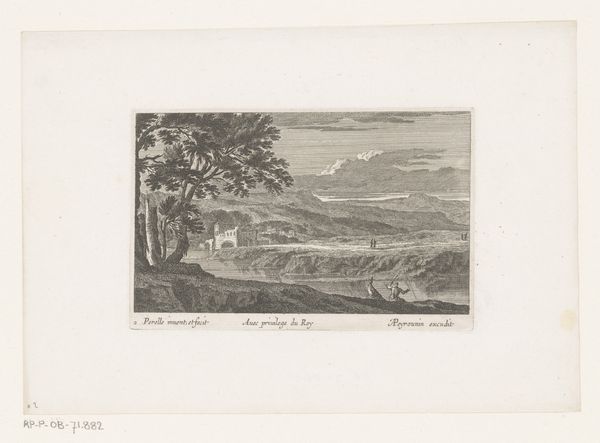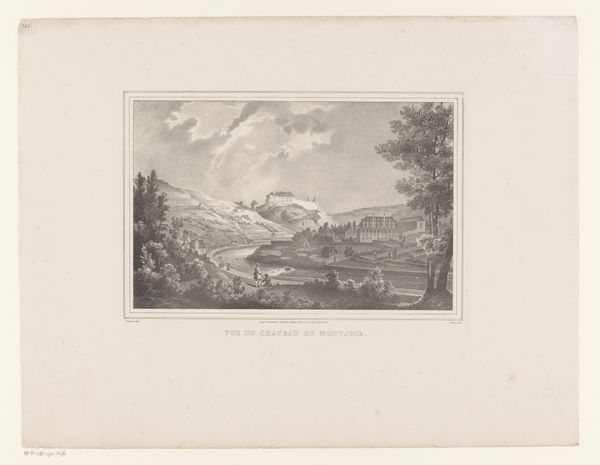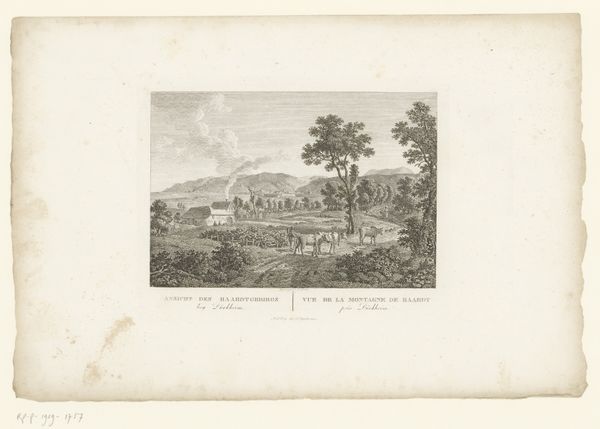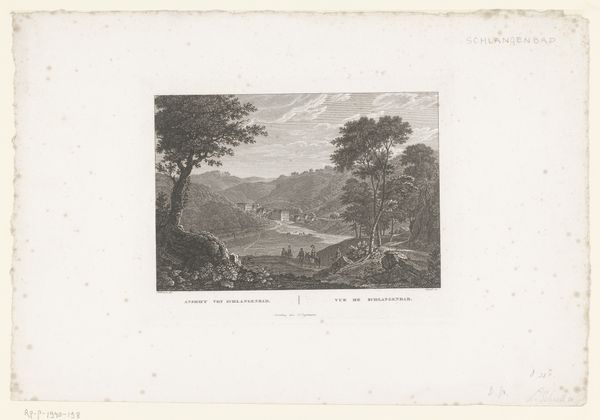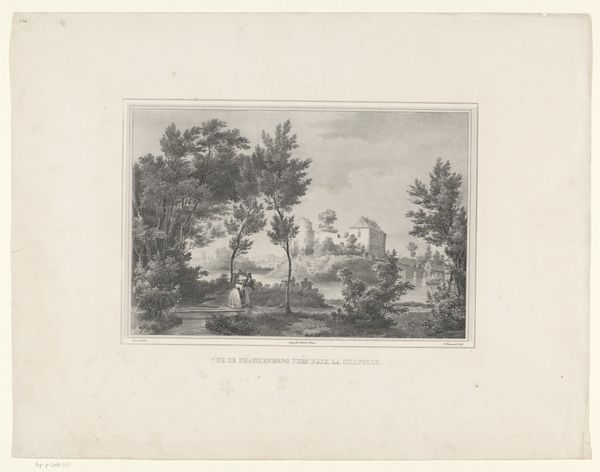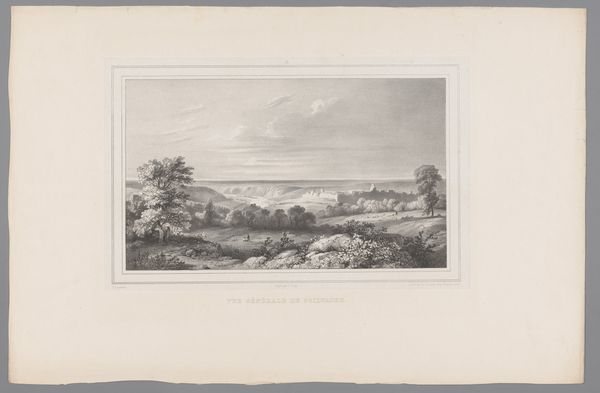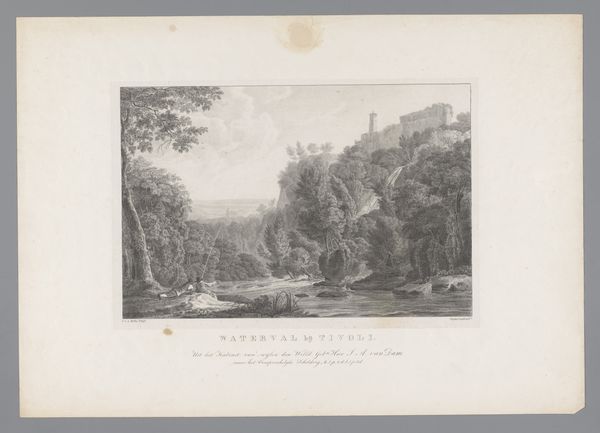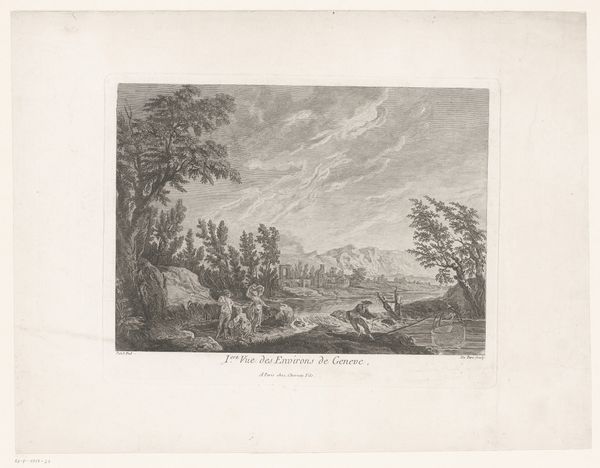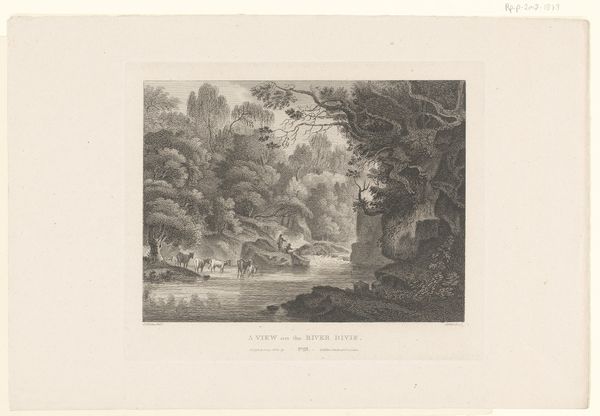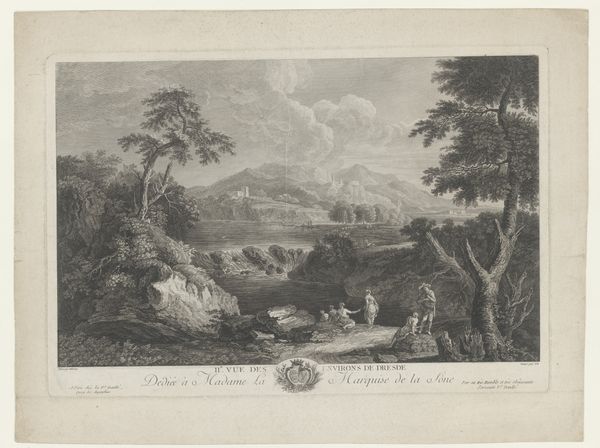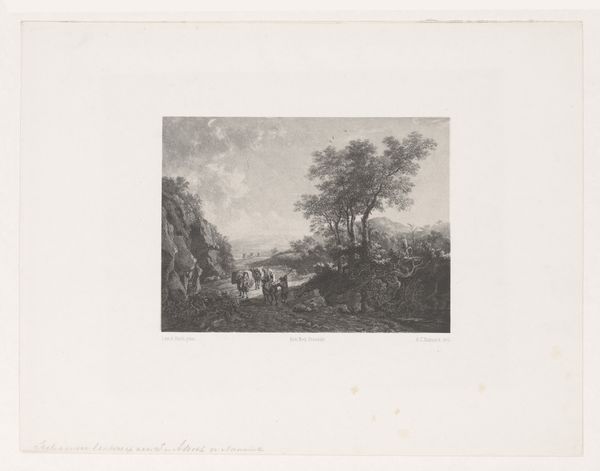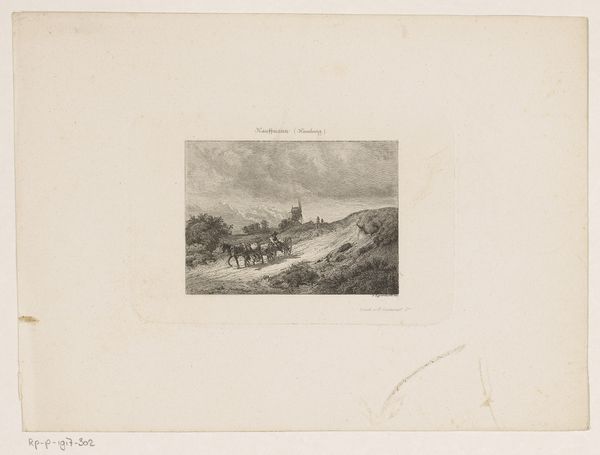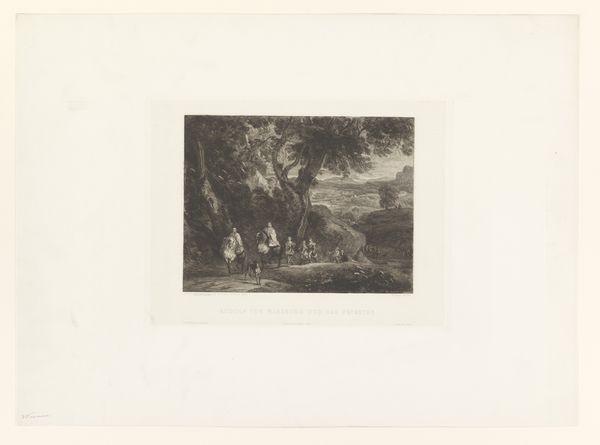
Dimensions: height 158 mm, width 207 mm
Copyright: Rijks Museum: Open Domain
Curator: This engraving, titled "Gezicht op de Rosenburg, bij Bonn," which translates to "View of the Rosenburg, near Bonn," captures a moment in the romanticized depiction of landscape. It comes to us from Herman Emden, crafted sometime between 1831 and 1871. Editor: It’s serene but also melancholic. The light feels filtered, casting a soft, almost dreamy aura over the castle and its surroundings. Curator: Absolutely. Emden positions us on the periphery, within a verdant slope inhabited by locals enjoying their daily life. This reflects a shift from earlier eras that highlighted the singular importance of a monument and a rising societal interest in images of public life. Editor: I see a man bearing timber that could signify burden or industry depending on the story, women walking on an elevated pathway towards their majestic town that dominates the immediate field of vision. Curator: Yes, and the composition reinforces this duality, creating a bridge to the societal and cultural hierarchy of its era. Rosenburg’s prominence reflects a nostalgia and romantic sentiment that characterized the early 19th century. Consider the Rhine Romanticism movement, with its idealized visions of history and nationhood. Editor: Right. I immediately relate the imagery to socio-economic stratification. It speaks volumes about accessibility, power, and the picturesque portrayal of privilege. Were everyday citizens granted access, or was it a visual performance reinforcing disparities? What voices and stories get omitted here, despite this 'daily life' representation? Curator: Precisely! The architecture almost becomes a theatrical backdrop. This isn't just about topographical accuracy; it's about constructing an ideal. The castle is framed as an aspirational vision, which at the same time presents a kind of hegemonic gaze upon local affairs. Editor: What resonates most for me is what's unseen. In art history, the romantic era has largely emphasized ideals and rarely confronts difficult realities. This Rosenburg vision is carefully selected—perhaps hiding something, intentionally. This artwork could be a form of visual propaganda of control through the image. Curator: Indeed. Revisiting art through this lens provides critical perspective. Thank you for reminding us to look behind romanticism to expose the societal functions and messaging. Editor: The invitation lies in considering images as critical instruments for investigating deeper realities of the artwork’s culture and time.
Comments
No comments
Be the first to comment and join the conversation on the ultimate creative platform.
